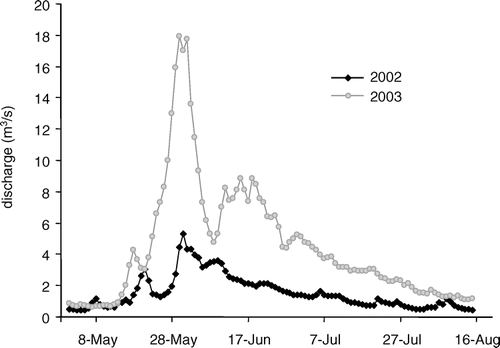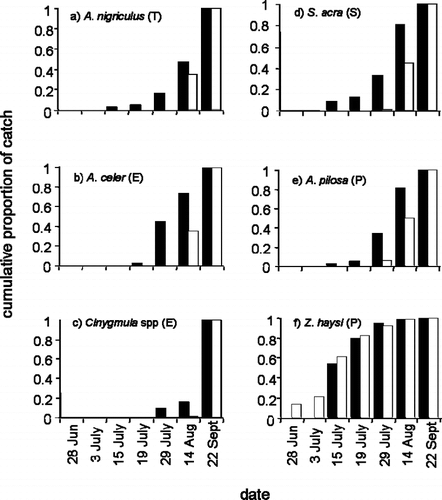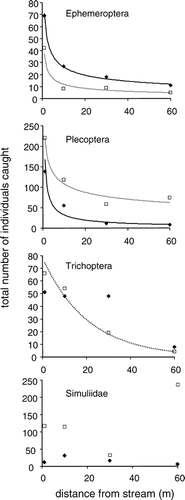Figures & data


Table 1 Total numbers of males (m) and females (f) collected for each higher-level taxonomic group and common species, and total species richness within higher-level groups across all traps in 2002 and 2003. Sex ratios marked with stars are significantly different from 1:1 (***p < 0.001; **p < 0.01; *p < 0.05).
Table 2 Lateral dispersal statistics for each major taxon and common species within each, along perpendicular transects in each of two years. R 2, slope, and p-value are for the best-fit models for each order. ND = not decreasing (p-values > 0.2 for decreasing slope). P-values in bold are those significant at α = 0.05.

Table 3 ANCOVA results summary. Note that ANCOVA was only assessed for taxa that showed significant decrease with distance according to regression of number collected on distance from stream for either or both 2002 and 2003. See (“best model”) for transformations made to achieve linearity for the ANCOVA for each taxon. P-values in bold are those significant at α = 0.05.